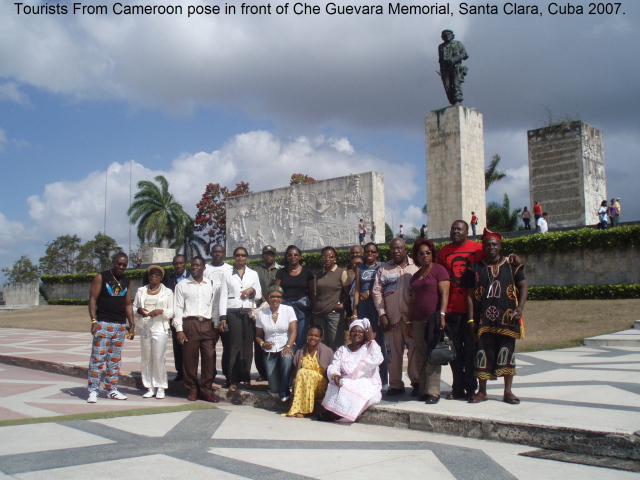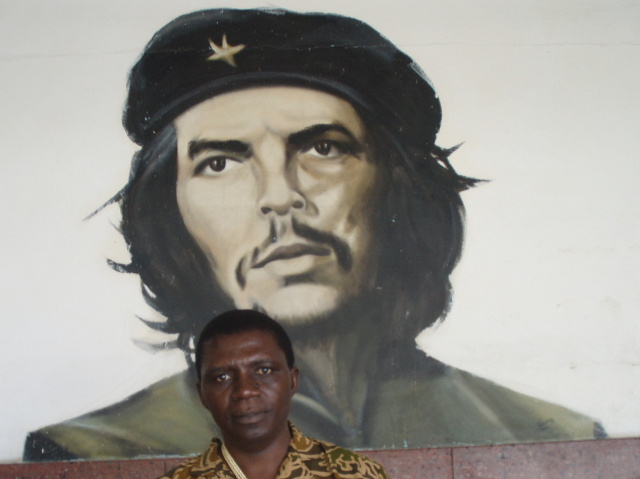Nearly half a century after his assassination, the legend of Che is still with us
5 Oct 2016
Forty nine years ago, Che Guevara was captured in the jungles of Bolivia while leading an insurgency against the American backed government of that country. He was subsequently executed (October 9th 1967) and buried in an unmarked grave. His remains were located decades later and they are currently placed in a Mausoleum built in his honor in Santa Clara, Cuba.

Che Guevara was born into a middle class family, graduated as a medical doctor and refused to exploit his background and his elitist profession to make a fortune for himself in comfort. He instead chose to do benevolent work in leprosy settlements and finally offered to join Fidel Castro’s group to fight for the liberation of Cuba from the grip of the dictator Fulgencio Batista. Here is a man who was born in Argentina offering to take mortal risk accompanying Fidel Castro’s guerillas to invade Cuba from Mexico. The mere fact that Che identified with the cause of Fidel Castro was enough for him (that was battling with asthma) to carry a riffle and enter rugged jungles of Cuba to fight for a people he was meeting for the first time. For three years, Che and his comrades fought gallantly, organized peasants and eventually chased the oppressors from power in Cuba.
After the triumph of the Cuban revolution in 1959, Che served as the president of the National bank of Cuba, director of planning board, commander of military regions and Minister of Industry before resigning in 1965 to go and help fight for others elsewhere. Any typical thieving ruler of this world in Che’s position would have exploited his duty posts to amass millions of dollars for himself. Che was an austere person who believed in sacrificing for the common good of everyone in the society. Even as a cabinet Minister, he regularly went to the field with Fidel Castro and other leaders to do manual work (cutting sugarcane) with laborers. By the time Che was leaving Cuba in 1965 to ‘export’ the revolution to Congo, Algeria and Bolivia, he had nothing material to leave for his family. In a farewell letter to Fidel Castro that year Che wrote; “I leave nothing material to my children and my wife, and this does not grieve me: I am glad that it be so; that I ask nothing for them, since the State will give them sufficient to live and will educate them”. (See full text of the farewell letter at this link http://www.historyofcuba.com/history/cheltr.htm
They were those Cuban soldiers who imbibed the Che Guevara doctrine (that extols soldiers to fight against injustice anywhere in the world) that came to Angola in the mid seventies and reversed the invasion of that country by the then Apartheid regime in South Africa and her lackeys. The actions of those heroic soldiers with the spirit of Che hastened the independence of Namibia and the liberation of Nelson Mandela from 27 years of incarceration in South Africa.
Thanks to Che, his fallen comrades and those still living, the Cuban people are able to enjoy their independence under the nose of one of the most powerful empires in living memory. Thanks to Che and his comrades, Cubans enjoy a long life span, have free education and free medical care in a multiracial society devoid of racism.
As Cubans, Bolivians, Venezuelans and millions of people around the world celebrate the 49th anniversary of his physical disappearance, they are consoled by the fact that the legend of Che grows bigger with each passing day. Many speeches will be made and many articles will be written about this icon of selflessness but everything said or written will gravitate around what Fidel Castro said during an eulogy to Che forty nine years ago. “Che did not fall defending any interest, defending any cause other than the cause of the exploited and the oppressed in this continent. Che did not fall defending any cause other than the cause of the poor, the humble, of this land. Before history, the men who acted as he did, the men who do everything and give everything for the cause of the humble, become greater with every passing day; they enter deeper into the hearts of the peoples with every passing day. The artist can die, particularly when he is an artist in such a dangerous art as the revolutionary struggle, but what cannot die under any circumstances is the art to which he dedicated his life and to which he dedicated his intelligence”.
In Cuba, children are taught to emulate Che- a man whose image has become ubiquitous around the world.

Infront of a giant Che Guevara image at a tobacco factory in Havana in 2007
Castro told Cubans nearly five decades ago that; “If we want a model of a man, a model of a man who does not belong to this time, a model of a man who belongs to future times, from the hearts, I say that the model, without a single blemish in its conduct, without a single blemish in its attitude, without a single blemish in its actions – that model is Che”.
1 Video of Che in his own words
https://www.youtube.com/watch?v=dayr8fgwRyM
2.Video of Mandela recognizing the contribution of Cuba to the liberation struggles of Southern Africa
https://www.youtube.com/watch?v=iksYRLDo3w8
Njei Moses Timah
|